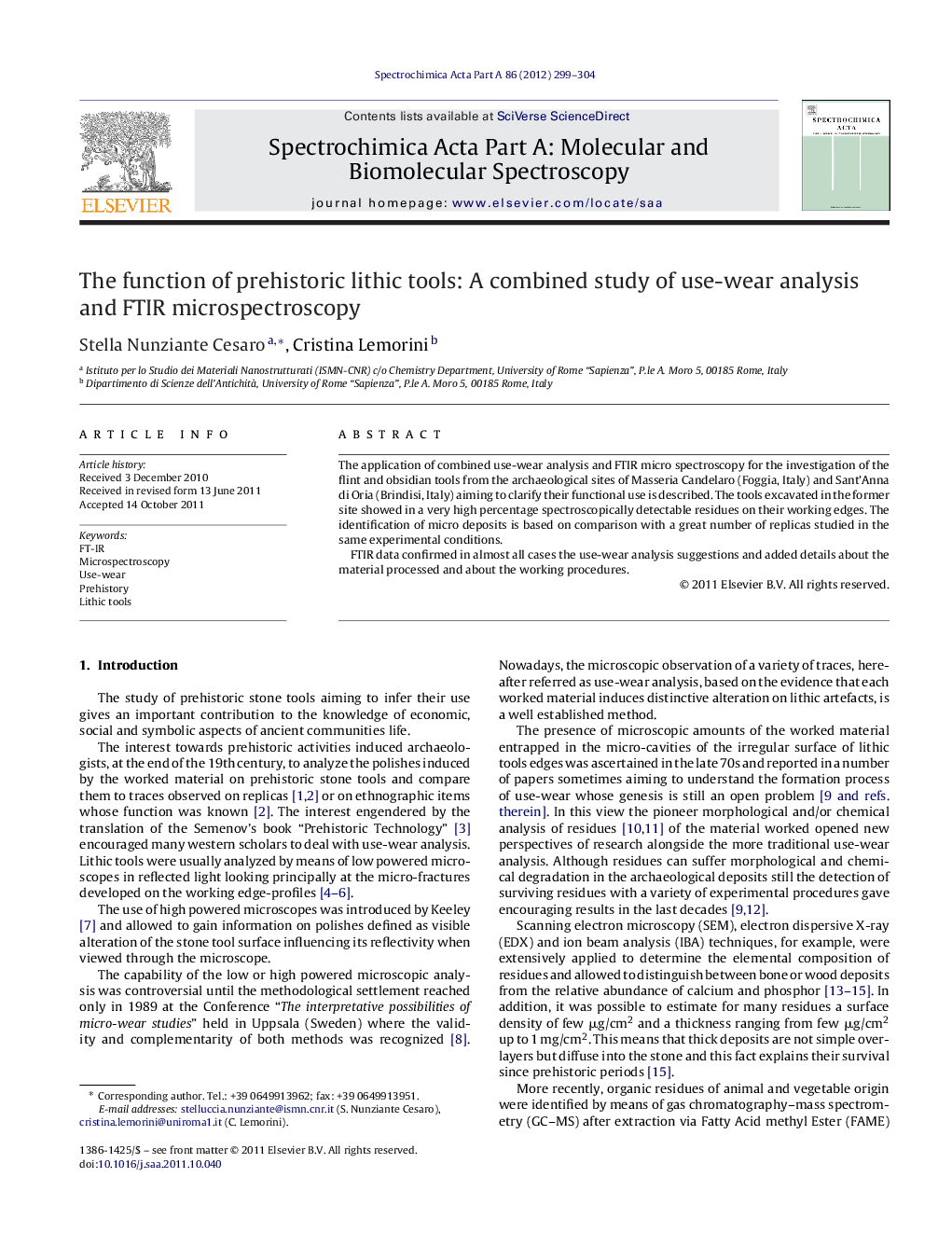| Article ID | Journal | Published Year | Pages | File Type |
|---|---|---|---|---|
| 1232616 | Spectrochimica Acta Part A: Molecular and Biomolecular Spectroscopy | 2012 | 6 Pages |
The application of combined use-wear analysis and FTIR micro spectroscopy for the investigation of the flint and obsidian tools from the archaeological sites of Masseria Candelaro (Foggia, Italy) and Sant’Anna di Oria (Brindisi, Italy) aiming to clarify their functional use is described. The tools excavated in the former site showed in a very high percentage spectroscopically detectable residues on their working edges. The identification of micro deposits is based on comparison with a great number of replicas studied in the same experimental conditions.FTIR data confirmed in almost all cases the use-wear analysis suggestions and added details about the material processed and about the working procedures.
Graphical abstractFigure optionsDownload full-size imageDownload as PowerPoint slideHighlights► We study with use-wear analysis prehistoric stone tools. ► We identify micro-residues on the same items through FTIR microspectroscopy. ► We create a useful reference collection of stone tools replicas. ► We compare use-wear analysis suggestions and spectroscopic data. ► Integration of independent techniques helps interpreting the function of the prehistoric tools.
